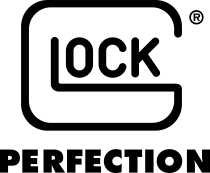Global Barium Carbonate Market (2022 to 2027) - Industry Trends, Share, Size, Growth, Opportunity and Forecasts - ResearchAndMarkets.com
The "Barium Carbonate Market: Global Industry Trends, Share, Size, Growth, Opportunity and Forecast 2022-2027" report has been added to ResearchAndMarkets.com's offering.
The global barium carbonate market reached a value of US$ 577.9 Million in 2021. Looking forward, the publisher expects the market to reach US$872.2 Million by 2027, exhibiting a CAGR of 6.9% during 2022-2027.
Companies Mentioned
- Solvay S.A.
- Chemical Products Corporation
- Hubei Jingshan Chutian Barium Salt Corporation Ltd.
- Guizhou Red Star Development Import
- Export Co. Ltd.
- Sakai Chemical Industry Co. Ltd.
- Hebei Xinji Chemical Group Co. Ltd.
- Shhanxi Ankang Jianghua Group Co. Ltd.
- Zaozhuang City Yongli Chemical Co. Ltd.
Keeping in mind the uncertainties of COVID-19, they are continuously tracking and evaluating the direct as well as the indirect influence of the pandemic on different end use industries. These insights are included in the report as a major market contributor
Barium carbonate (BaCO3) is a white solid sourced from the precipitation of barium hydroxide and urea. It is also obtained from mineral barite or barium chloride. Barium carbonate is water-insoluble, tasteless, odorless, dense and extremely toxic in nature. It is utilized in the production of various commercial products, which include rubber, paints, enamels, ceramics, oil drilling, glass, and bricks. Specialty glass made using barium carbonate provides radiation shielding in CRT televisions. It is also used in making bricks, clays, photographic paper coatings, hard ferrite magnets, permanent ceramic magnets for loudspeakers and in the removal of sulphate from salt brines before they are fed into electrolytic cells. Besides this, the high toxicity of barium carbonate makes it an ideal solution in the formulation of rodenticides
Rapid expansion in the construction and real estate industries is primarily driving the global barium carbonate market toward growth. Besides this, governments of various nations have been focusing on infrastructural development, which is escalating the demand for bricks and ceramic tiles. The market growth is further supported by significantly increasing urbanization and disposable incomes, particularly in developing countries, which has led to the inflating sales of premium-quality decorative items, such as vases, glass paintings, and ceramic figurines.
Moreover, the electro-ceramics industry has been witnessing significant growth, wherein barium carbonate is utilized in the production of several components, such as piezoelectric transducers, electromechanical devices, sensors, and optical modulators. Furthermore, the implementation of stringent regulations to control environmental degradation caused by the industrial sector has prompted key players to adopt eco-friendly processes for producing barium carbonate, such as using methane as the reducing agent, which is creating a positive outlook for the market
Key Question Answered in this Report
1. What was the size of the global barium carbonate market in 2021?
2. What is the expected growth rate of the global barium carbonate market during 2022-2027?
3. What are the key factors driving the global barium carbonate market?
4. What has been the impact of COVID-19 on the global barium carbonate market?
5. What is the breakup of the global barium carbonate market based on the end-use?
6. What are the key regions in the global barium carbonate market?
7. Who are the key players/companies in the global barium carbonate market?
Key Topics Covered:
1 Preface
2 Scope and Methodology
3 Executive Summary
4 Introduction
4.1 Overview
4.2 Physical and Chemical Properties
4.3 Key Industry Trends
5 Global Barium Carbonate Market
5.1 Market Overview
5.2 Market Performance
5.2.1 Volume Trends
5.2.2 Value Trends
5.3 Impact of COVID-19
5.4 Price Trends
5.5 Market Breakup by Region
5.6 Market Breakup by End-Use
5.7 Market Forecast
5.8 SWOT Analysis
5.9 Value Chain Analysis
5.10 Porter's Five Forces Analysis
5.11 Trade Data
5.11.1 Imports
5.11.2 Exports
5.12 Key Market Drivers and Success Factors
6 Performance of Key Regions
7 Market by End-Use
8 Competitive Landscape
8.1 Market Structure
8.2 Key Players
9 Barium Carbonate Manufacturing Process
9.1 Product Overview
9.2 Chemical Reactions Involved
9.3 Manufacturing Process
9.4 Detailed Process Flow
9.5 Raw Material Requirements
9.6 Mass Balance and Feedstock Conversion Rates
10 Barium Carbonate Feedstock Market Analysis
10.1 Barite
10.1.1 Market Performance
10.1.1.1 Volume Trends
10.1.1.2 Value Trends
10.1.2 Price Trends
10.1.3 Market Breakup by Region
10.1.4 Market Breakup by End-Use
10.1.5 Key Suppliers
10.2 Pet Coke
10.2.1 Market Performance
10.2.1.1 Volume Trends
10.2.1.2 Value Trends
10.2.2 Price Trends
10.2.3 Market Breakup by Region
10.2.4 Market Breakup by End-Use
10.2.5 Key Suppliers
10.3 Sodium Carbonate
10.3.1 Market Performance
10.3.1.1 Volume Trends
10.3.1.2 Value Trends
10.3.2 Price Trends
10.3.3 Market Breakup by Region
10.3.4 Market Breakup by End-Use
10.3.5 Key Suppliers
11 Key Player Profiles
For more information about this report visit https://www.researchandmarkets.com/r/gq9jln
View source version on businesswire.com: https://www.businesswire.com/news/home/20220201005835/en/




